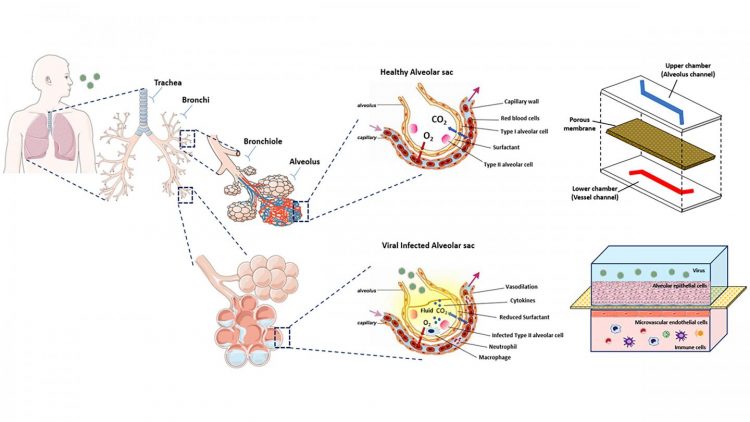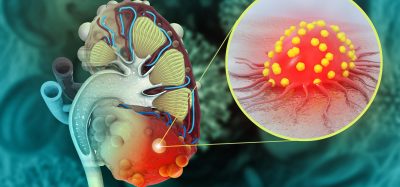Lung-on-a-chip models enable advanced study of immune response
Posted: 24 March 2021 | Victoria Rees (Drug Target Review) | No comments yet
Researchers have reviewed lung-on-a-chip technologies, finding they are useful for representing the various disease pathologies.

Researchers have reviewed a range of lung-on-a-chip technologies that represent the vital properties of lung tissue and are capable of recapitulating the fundamental aspects of various pathologies. The study was conducted by a team from Ege University, Turkey, and the University of Nottingham, UK.
According to the researchers, animal models have been used widely to understand how these viruses infect the host and how the host responds to prevent infection and onset of diseases. Data based on animal models, however, does not always apply well to humans, given the variability in species and genetics.
“Lung-on-a-chip platforms are able to reconstruct the multicellular architecture, the physiochemical microenvironment and the tissue-tissue interface of the human lung in vitro,” said author Ozlem Yesil-Celiktas.
The researchers reviewed various state-of-the-art lung-on-a-chips and their applications in examining, diagnosing and treating human viruses, including the coronavirus that causes COVID-19. Different platforms focus on different parts of the lung functions, such as small airway-on-a-chips and lung alveolus chips.
“The current pandemic, which spread to almost every continent in just a few months, makes us realise how much we need a practical, humanised platform to expedite the trials for potential antiviral drugs and vaccines,” said Yesil-Celiktas.

Simplified schematic model of the human lung with healthy and virus-infected alveolar sacs along with a viral infection on a lung alveolus platform [credit: Yildiz-Ozturk].
Considering new research showing one of the aftereffects of COVID-19-related pneumonia is pulmonary fibrosis, the lung-on-a-chip systems, which focus on lung fibrosis, enable a deeper understanding of disease mechanisms and related immune and technological responses.
Despite the advantages, the researchers say the lack of vascularity and integration with external immune cells means these organ-on-a-chip platforms require the integration of these components to the microchips, not only for viral infections but also for other pathologies.
Going forward, the team will integrate modular sensing apparatus to provide online monitoring opportunities along with diagnostic outcomes. Such biomimetic systems also enable high-resolution and real-time imaging, as well as in vitro toxicological analysis or measurements of metabolic activities of living cells.
The findings were published in Biomicrofluidics.
Related topics
Disease Research, Drug Development, Organ-on-a-Chip
Related conditions
Covid-19, pneumonia, Pulmonary fibrosis
Related organisations
Ege University, Nottingham University
Related people
Ozlem Yesil-Celiktas







